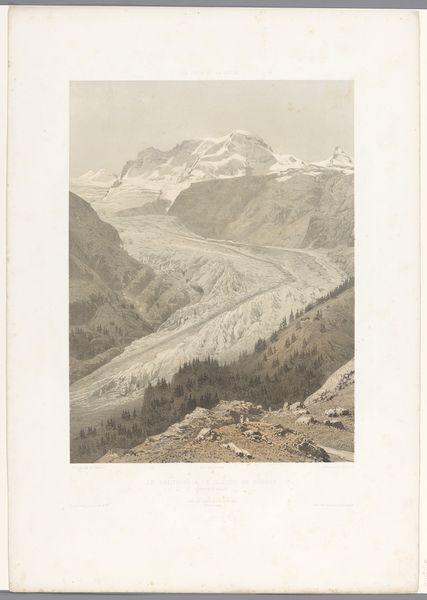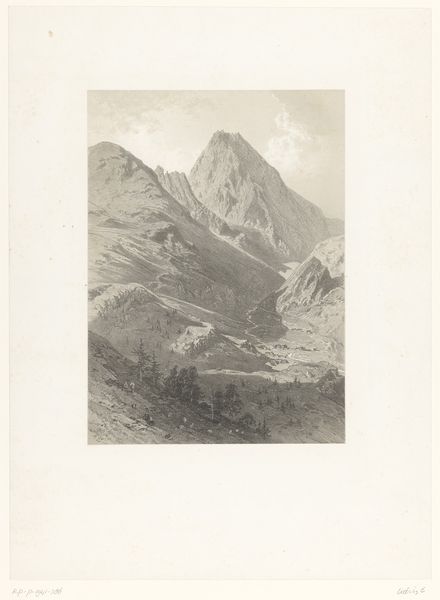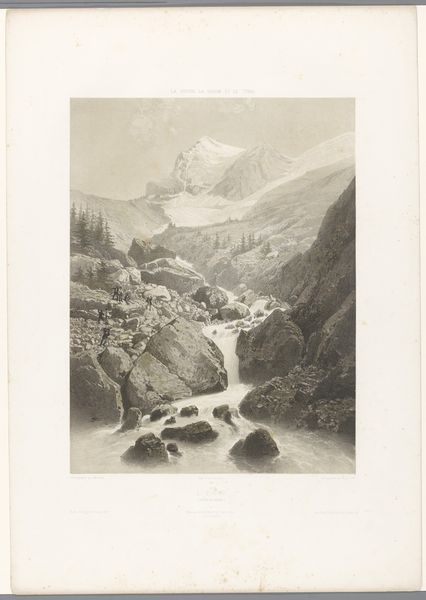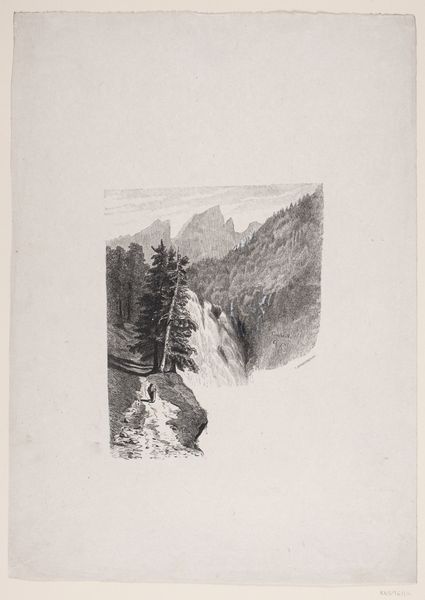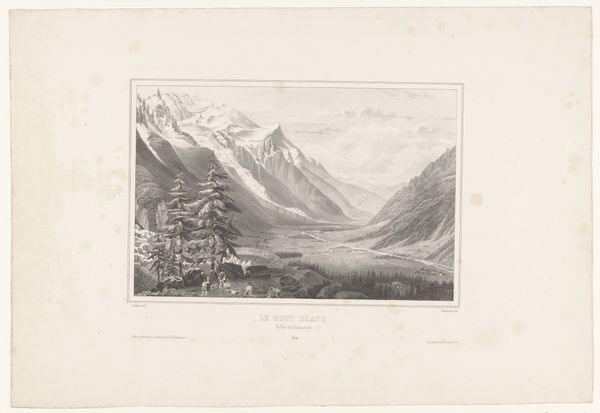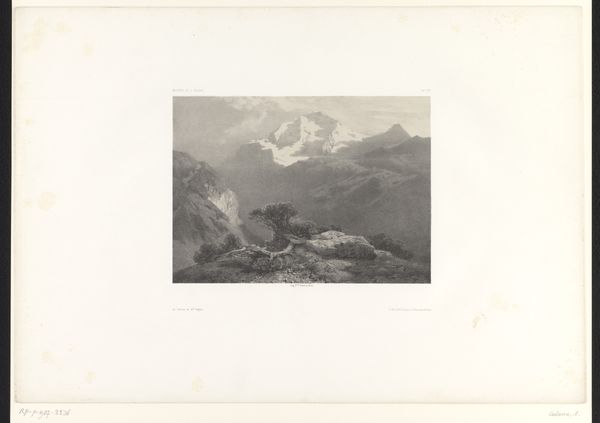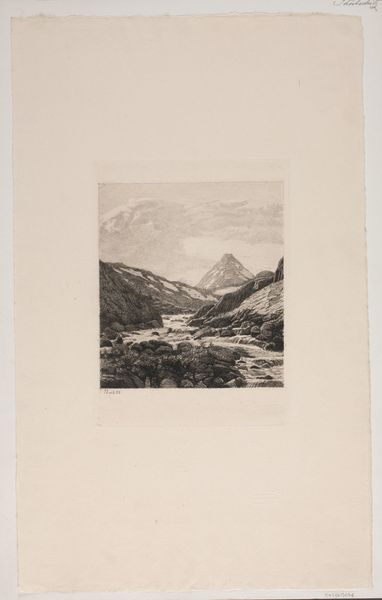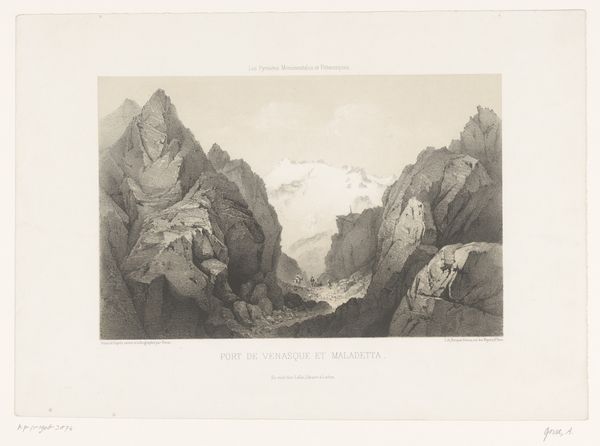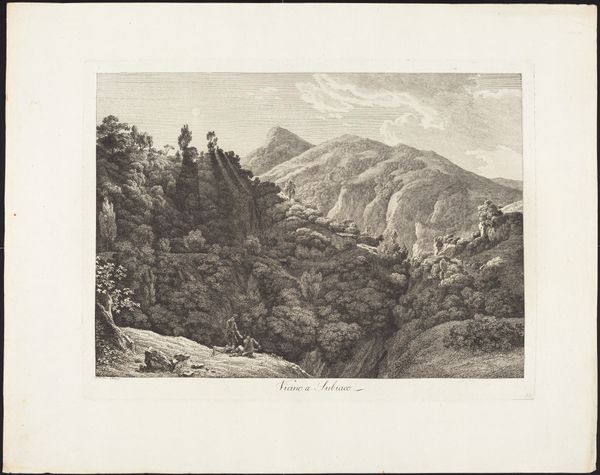
drawing, print, paper, pencil
#
pencil drawn
#
drawing
#
ink paper printed
# print
#
pencil sketch
#
landscape
#
white palette
#
german-expressionism
#
paper
#
mountain
#
pencil
#
pencil work
#
realism
Dimensions: height 293 mm, width 178 mm
Copyright: Rijks Museum: Open Domain
Curator: This is Hans Thoma's "Berglandschap," created in 1917. It's a pencil and ink print on paper. What strikes you first about it? Editor: There's a kind of quiet intensity in the lines. It feels delicate, almost hesitant, but the composition pulls you into this valley quite powerfully. Curator: The landscape evokes a longing for an idealized German past, one deeply intertwined with the political upheavals and national identity anxieties of the early 20th century. Thoma positions the rural landscape as a refuge, opposing the march of modernity and the disruptions of industrialization. The question remains if this representation authentically mirrors rural experiences. Editor: From a formal point of view, it's fascinating how the artist has used such simple means—lines, shading—to create a sense of depth and scale. The mountains in the background, especially, feel immense, while the cottage in the foreground seems to anchor the whole composition. Semiotically, we see clear juxtapositions, the crude roof versus the soft sky. Curator: Precisely! Considering the German Expressionist movement, it also reflects a collective grappling with trauma, exploring themes of alienation, disillusionment, and a yearning for authenticity. Thoma seems to tap into these sentiments, representing landscape as both a physical space and a psychological terrain marked by collective trauma and individual struggles. Editor: Looking at how light and shadow interact, it reminds me of certain photographic processes of the time. Perhaps the artist wanted to invoke this particular moment using contemporary reproduction processes that themselves echoed the industrialisation they eschewed? Curator: And perhaps comment on the rapidly evolving representation of place during that pivotal period. Editor: Indeed. Curator: Reflecting on our conversation, what stands out most is the tension between the artist's subjective experience and the socio-political landscape he inhabited. Editor: Agreed. It shows just how potent an impact minimalist compositions can evoke.
Comments
No comments
Be the first to comment and join the conversation on the ultimate creative platform.


